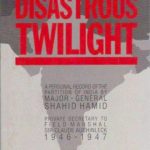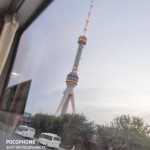By Nisar Ul Haq
Donald Trump mentioned Afghanistan just once in his speech to the United Nations Tuesday. His “new strategy for victory” there, he said, would help “crush the loser terrorists and stop the reemergence of safe havens they use to launch attacks on all of our people.”
Trump outlined that new strategy on August 21, in an address that was a curious mixture of the vague and the specific. Speaking at Fort Myer, the U.S. president announced plans to deploy additional American troops, but did not give details about numbers, policy specifics or an exit strategy. He mentioned Pakistan 12 times criticizing it for “housing the very terrorists that we are fighting” but did not make a single mention of the two other countries ramping up resistance to the U.S. presence in the region: Russia and Iran.
That was a serious omission on Trump’s part. No U.S. plan for Afghanistan can accomplish even its most minimal objective of destroying militant groups like al Qaeda or the Taliban unless it factors in the mounting evidence that Tehran and Moscow are playing a more aggressive role in resisting the American presence in the region.
Sharif Yaftali, chief of general staff of the Afghan national army, told the BBC in an exclusive interview on September 6 that Kabul has evidence showing that Iran had provided the Taliban with weapons and equipment in western Afghanistan. While Yaftali acknowledged that Afghan security forces have not yet found any evidence of Russian support for the Taliban, others believe Tehran is consolidating its South Asian partnership with Russia by serving as a mediator between Moscow and Afghan insurgents.
“The regional politics have changed,” Mohammed Arif Shah Jehan, an Afghan senior intelligence official recently appointed the governor of Farah province adjacent to Iran told The New York Times in August. “The strongest Taliban here are Iranian Taliban.” Iran also helps Russia provide various types of weaponry to the Taliban, Hayatullah Hayat, the provincial governor of Helmand province, told the Washington Post. The arms deliveries include rocket-propelled grenades, landmines, sniper rifles and 82mm mortar rounds.
In a similar vein, construction of the largely India-funded Chabahar port in Iran’s southeastern Sistan and Baluchistan province is arguably pursued with a view to the Afghan war and the strategic rivalries unfolding there.
A counterweight to Pakistan’s Chinese-backed Gwadar port only 62 miles away, Chabahar will enhance Delhi’s foothold in landlocked Afghanistan by offering it convenient access through the Gulf of Oman, thereby enabling India to bypass rival Pakistan. This can in turn boost Iran’s military mobility and political influence over events in the conflict-ridden nation.
Perhaps the most telling sign of Tehran-Taliban collaboration dates back to May 2016, when a U.S. drone targeted a lone vehicle on a desert route in the southwest Pakistani province of Baluchistan, killing the driver and his only passenger. The passenger’s passport listed his name as Wali Mohammad; U.S. and Afghan officials said he was really Taliban leader Mullah Akhtar Mansour.
Intriguingly, the mystery passenger was returning from Iran; the passport indicated that it was at least his second trip to the neighboring Islamic Republic that year. The catalyst for Shiite Iran’s unlikely yet growing relationship with the Sunni Taliban has been the rise of the more militant, rabidly anti-Shiite Islamic State in parts of Afghanistan. For Iran, the Taliban is the lesser evil with the potential to serve as a local bulwark against the spread of the most aggressive anti-Iranian forces to its east.
Trump needs to recognize the profound regional shift in interests and alliances since the U.S. invaded Afghanistan after the 9/11 attacks on New York and Washington. Back in 2001, Tehran helped the U.S.-led coalition topple the Taliban, which it blamed for the killing of Iranian diplomats during the storming of Iran’s consulate in Mazar-i-Sharif three years earlier.
The intelligence and military assistance offered by Iran and its Afghan allies in the Northern Alliance a military front that also enjoyed the backing of Russia and India at the time was indispensable to the U.S. Mission. Sixteen years on, Trump’s anti-Iran sentiments make a similar collaboration unlikely. However, Washington does have to recognize that it cannot ignore Iran’s national security concerns in its immediate neighborhood or Russia’s strategic interests in Central and South Asia.
Trump doesn’t have to become Moscow or Tehran’s best friend, but he should be considering measures like offering to de-list Iran as a “state sponsor of terrorism” and easing sanctions against Tehran and Moscow in return for their withdrawing support from anti-American forces in Afghanistan. Those measures aren’t going to end Afghanistan’s internal conflict, but they might de-escalate it enough for Trump to work on a new exit strategy for U.S. Troops.






